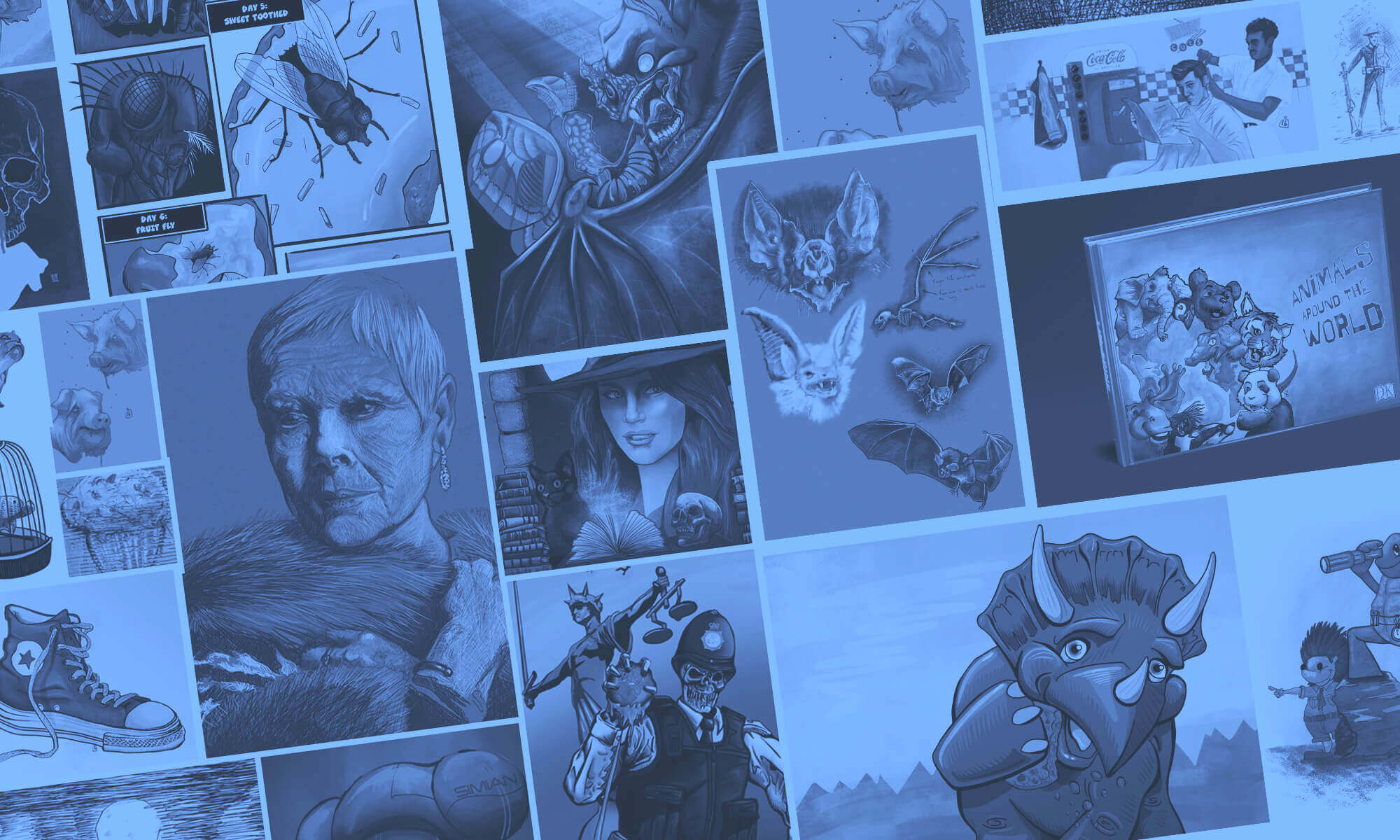I started watching the video series “Ways of seeing” the information in this documentary series was excellent and the passion with which it is conveyed is admirable, I then went on to research across the internet.
I wanted to look into several of the key factors that I would suspect would be potential catalysts and possible reasons as to why the nude figures portrayal in art had changed over time, the main factors that spring to mind would be;
- censorship of art considered to be indecorous
- trends and style, starting anew and also keeping consistent with the artists contemporaries
- Individual beliefs and values, theologically, morally and sexual
Censorship
The section about context in the “ways of seeing” was very enlightening, isolating sections of an artwork can easily lead to a complete change of narrative or intention, in the case of the nude this kind of distortion of the artists intent could change the entire emphasis and meaning, below is Danäe by Gustav Klimt, the original image depicts a character from greek mythology, the narrative is that the father of Danäe imprisoned her in a tower to keep her safe from the attention of men, Zeus is actually impregnating her with a shower of golden coins. When we crop the image and emphasise our attention on the breast, the facial expression and the gesturing hand it takes on more of an erotic tone. It removes the narrative entirely, the only thing connecting the story to the art being the title of the piece. Could a misunderstood message or a misplaced focus be responsible for historical censorship of the nude, this seems quite possible.
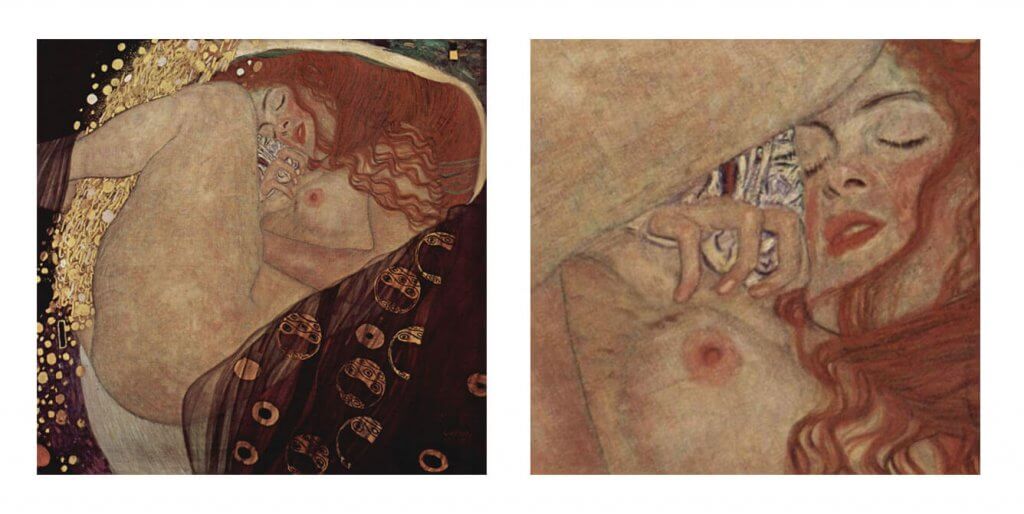
Another reason a painting could be censored is interpreting the narrative based on the censors beliefs. After all for some cultures, nudity isn’t lewd or inappropriate, for example the unclothed figure has been used as a sign of fertility in ancient artworks, the Mayans and Egyptians civilisation centered around the power of fertility and the nude was featured heavily across art disciplines.
One censors misperception or indeed a manipulation of a perception is all it takes to make a big change, this isn’t reserved for antiquated beliefs or mentalities, while a slight divergence from nudes depicted in art, there is a relevant story about nudes in comic books that proves that one mans opinion can bring on direct change. In 1954 a psychiatrist named Frederick Wertham wrote a book called the Seduction of the Innocent, this book was a warning to the parents of children.
According to his research, comics were a bad influence on children, and would lead to delinquency, one of his key pieces of “evidence” was an indecent image, he alleged a partial nude had been placed subliminally and with intent to corrupt young minds. The image depicted a male shoulder, the darkened area of shadow in the deltoid muscle he felt displayed the pubic area of a woman and was intended to be obscene.
His campaign against comics brought on the comic book code and in 2010 he was found to have falsified his findings and data to prove his own speculation, in 2011 the comics code had been abandoned. Frederick Wertham was able to manipulate an audience into thinking the American comic book was a damaging influence on the young reader, and that was only 67 years ago. I imagine it being a lot easier historically for this kind of censorship to be introduced, religion alone having a stronger presence and influence, stating that showing nudity is sinful or inappropriate.
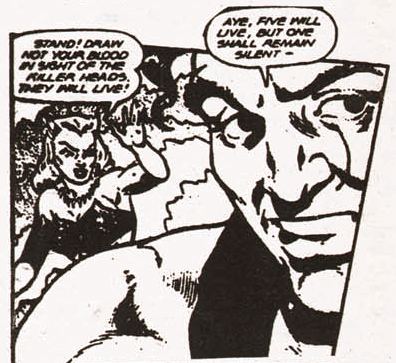
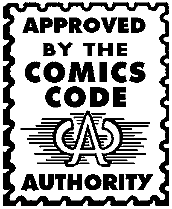
The most well known form of religious censorship in art is the “fig leaf” campaign. The fig leaf campaign is most commonly thought to start with Michelangelo’s David (although some of the research suggested this is just the most well known example of the fig leaf censorship), the 17 foot tall statue depicting the biblical character just before or maybe after defeating the giant Goliath, is nude. The bible offers explanation to why David is nude, he was dressed in armour before battle and decides that he doesn’t want the armour as he is not used to them. The catholic church decided that “figures shall not be painted or adorned with a beauty exciting…lust.” this resulted in works of art that featured nudity being covered and censored by draped cloth and fig leaves. David was adorned with a garland of bronzed leaves, this was contrary to the description in the bible and didn’t really fit the beauty exciting…lust criteria, in this instance it was the censors own subjective understanding that brought on the change to the previously accepted nude. The leaves remained for half a century until opinions changed.
Trends and style
The many periods of art all depict the nude in different ways, for example, the female nude in medieval art is often portrayed as having a rounded stomach, sometimes an almost pregnant looking appearance, or the abstraction of the figure as seen in cubism, the still and static female nude during the renaissance period is wholly different to the the sensual and dramatic portrayal of the baroque period. Its easy to imagine that, other artists would be influenced and study the works of art by their influencers, Picasso and Mattise were both inspired by the works of Cezanne, and were known for their sense of rivalry, eventually their work would start to be very different but their earlier works had a similar approach, below is a comparison of a Painting (left) by Cezzane painted in 1898-99, a Matisse painted in 1920 (center) and a Picasso also from 1920 (right) while they are all clearly painted by three different artists, you can see a visual connection.
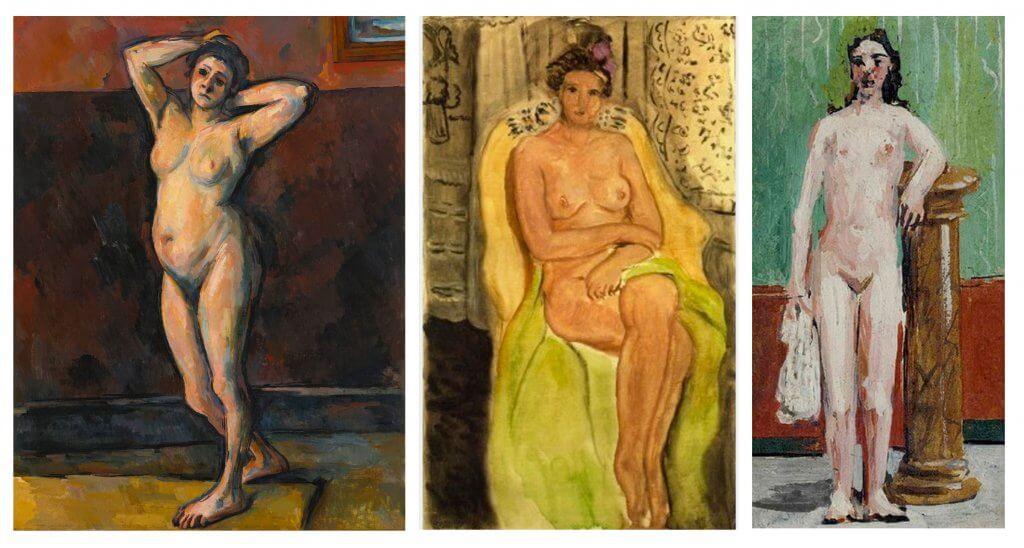
Mattise and Picasso’s style, I imagine as a result of their well documented rivalry did change into very different approaches, Mattise using the Fauvism style a strong, vibrant, and flat aesthetic vs Picasso’s Cubist approach, which aimed to capture a subjects form at a range of viewpoints, the very opposite of flat. Below is an example.
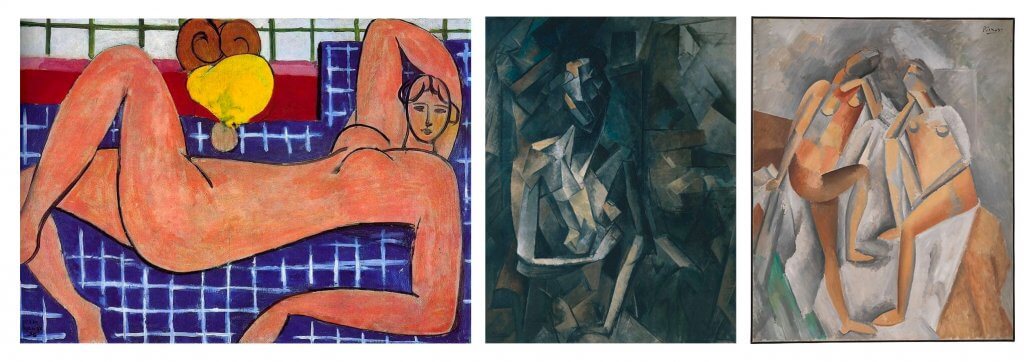
Art movements do follow a set of ideas and style which in turn dictate how the subjects are presented, the nude figure is no exception.
Individual beliefs and values
Nudity in art doesn’t necessarily suggest sexuality, The renascence artists seemed to prefer to show the nude form not to convey lust in any form but as a study of anatomy, after all these were usually religious pieces and the subjects the art focused on were not always of that nature. Baroque art shows us a more dramatic nude, but again, usually had religious content.
There have been many artists that have used sexuality as their muse, the ones that stood out during my research were Gustav Klimt, Egon Schiele and Lucian Freud.
Egon Schiele had an amazing and unique sense of style and focused on nudes of both genders, his art is raw and in some cases quite graphic, and sexually explicit, Schiele was a protege of Gustav Klimt, Klimt’s work also showed quite a lot of sexuality, particularly his sketches. the sketches are quite far removed form his painted works, his paintings are characterised by his use of pattern, the sketches are quite sexual in nature, particularly from his choice of pose.
Lucian freud also shows us a graphic nude, although quite differently to Schiele ( I did read that Schiele was an influence), less sexuality seems to be on display, we are shown in his male nude studies, great detail and realism depicting just how ugly and grotesque a male figure can be, as the grandson of Psychoanalyst Sigmund Freud you can imagine the work is intended to be quite cerebral and jarring, maybe even as the viewer uncomfortable.
I mentioned this before in one of my previous exercises about statues, Michelangelo’s representation of the nude female he is apparently using male models. There seems to be no way of knowing exactly why, I have read several different theories, one was that Michelangelo’s own sexuality or maybe even a lack of it meant he never saw the female form, another theory was that he was incredibly religious and would not look at the female form, living for the catholic church in celibacy. It has also been suggested that female models were hard to come by. Michelangelo was not unique in this case, other Renaissance artists seem to have used male models for female studies, nude or clothed, Raphael’s St Catherine of Alexandria was based on a male model, while not as immediately apparent as Michelangelo’s sculpture “night” this could mean Raphael was familiar with the characteristics of a female, and how best to adjust the male to female characteristics to portray the gender. Donatello, was said to have been homosexual and was quite obvious about this, despite what the catholic church would say, his version of David is now considered to be a work of homoeroticsim, a google search brings up quite a few articles on this.
It is quite hard to find which one, if any applies, wether sexuality, beliefs or risk of offending the Catholic church, who was commissioning the artwork at the times was the contributing factor of the artists of the Renaissance periods choice of model.
My time spent researching the changing nude has probably brought up more questions than I ever imagined and certainly more I have the knowledge to answer without more extensive research. Above are three broad reasons that I imagine are all valid contributors in the evolution of the nude in art, I’m sure there are many more. Importantly for me, I think the biggest message I have taken from the research is context, and how it reinforces the choices of the artists, and what it means to the overall experience or message if it is removed, corrupted or even unintentionally changed.
